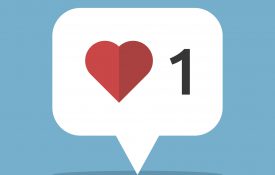-
Scientists Are Trying to Solve the Mystery of Awe
New York Magazine: Think about a time you’ve experienced awe. Maybe you were gazing up at a massive mountain range, or looking down into the depths of an infant’s eyes, or watching lightning as it seemed to crack the sky open. Maybe you felt humbled, or shaken; maybe you were struck by the vastness of the universe and your own tiny part in it. Psychologists consider awe a form of “self-transcendence”: you temporarily blur at the edges, feeling a connection to something greater than yourself. Accounts of awe abound in the arts and humanities, but it wasn’t until relatively recently that psychologists have begun to explore the phenomenon in depth.
-
More and more research shows friends are good for your health
The Washington Post: Overwhelmed recently by the stress of an impending move — along with the usual demands of a busy life — I turned to the people I love. In small chunks of time between tasks on my to-do list, I called and texted with my sister, my parents, local friends and old friends scattered around the country. Some conversations turned my stress into laughter. Others made me cry. One friend came over to clean out my closet. Then she took our kids for four hours so we could pack without interruption. ...
-
Dynamic Dazzle Distorts Speed Perception
During World War I, a zoologist proposed that British warships could use the “disruptive” camouflage of zebras and leopards to confuse enemy ships. Instead of attempting to hide from view, the idea was that “razzle dazzle” patterns would make it difficult for the enemy to accurately gauge a ship’s position -- misleading rather than hiding. Although both American and British warships were painted with psychedelic zebra-stripe patterns based on this theory, it was never conclusively shown that the razzle dazzle stripes helped the ships elude enemy fire.
-

Social Media ‘Likes’ Impact Teens’ Brains and Behavior
The same brain circuits that are activated by eating chocolate and winning money are activated when teenagers see large numbers of “likes” on their own photos or the photos of peers in a social network
-
New Research From Clinical Psychological Science
Read about the latest research published in Clinical Psychological Science: The Method of Loci Improves Longer-Term Retention of Self-Affirming Memories and Facilitates Access to Mood-Repairing Memories in Recurrent Depression Aliza Werner-Seidler and Tim Dalgleish Studies have shown that recalling self-affirming memories can improve negative mood. Researchers investigated whether a mnemonic technique called the method of loci, in which memories are visualized as occurring along a familiar path, might offer an effective strategy that patients in remission from depression could use to recall such self-affirming memories.
-
Does Financial Insecurity Lead to More Physical Pain?
Scientific American: A research team led by public policy Professor Eileen Chou at the University of Virginia hypothesized that the confluence of these two trends – greater economic uncertainty and more physical pain – may not be entirely coincidental. Chou and her colleagues recently published a paper in Psychological Science summarizing six studies that demonstrate a direct link between financial insecurity and the experience of physical pain. The first study looked at a diverse sample of 33,720 American households and found that households in which one or more of the primary adults are unemployed spend more money on painkillers.

